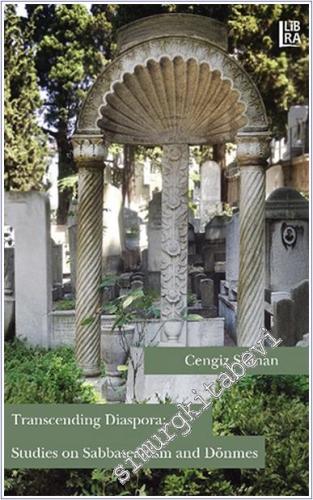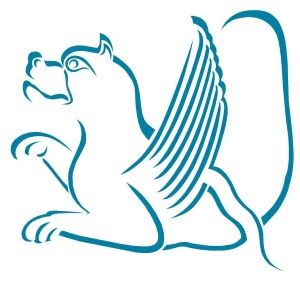#smrgKİTABEVİ Transcending Diaspora: Studies on Sabbateanism and Diaspora -

İçindekiler
TABLE OF CONTENTS
INTRODUCTION
Section I: 17th Century
1. "Dönme," Oxford Encyclopedia of the Islamic World (New York: Oxford University Press, 2009)
2. "Global Crisis, Puritanism and Prophesy in the Early Modern World: Some Observations on the Apocalyptic Relationship between Christian Salvation, Jewish Conversion and Turkish Doom and Its Impact on the Sabbatean Movement." A revised paper presented at the Association for Jewish Studies (AJS), Los Angeles, 2002.
3. "Hayatizade Mustafa Efendi (Moshe ben Rafael Abravanel), the Physician-in-Chief of the Ottoman Palace: Marrano Legacy, Ottoman Medicine and the Sabbatean Movement." A revised paper presented at the Association for Jewish Studies (AJS)i Boston, 2000.
4. "A Jewish Messiah from Tartaria in 1671: A New Source on the Lives of Lesser Sabbatian Prophets, Sabbatai Raphael and/or Shilo Sabbatai," Kabbalah: Journal for the Study of Jewish Mystical Texts (2003), 63-75.
Section II: 18th -19th centuries
5. "The History of the Naming the Ottoman/Turkish Sabbateans," in Studies on Istanbul and beyond: the Freely Papers, ed. Robert G. Ousterhout, (Philadelphia: University of Pennsylvania Press, 2007), 37-53.
6. "Konvenyamos Konvedrad: Language of Daily Life, Communal Regulations and Liturgies of the Ottoman and Turkish Sabbateans (Dönmes)," in Judeo-Spanish in the Time of Clamoring Nationalisms, ed. Mahir Şaul (Istanbul: Libra Kitap, 2013), 69-98.
7. "Failed Proselytizers or Modernizers?: Protestant Missionaries among the Jews and Sabbatians/Dönmes in the Nineteenth Century Ottoman Empire," Middle Eastern Studies 51:6 ( 2015), 932-949.
Section III: 20th and 21stcenturies
8. "The Dönme Affair: A Letter of a Young Dönme from Salonica on Assimilation (1925)," in The Jew in the Modern World: A Documentary History, ed. Paul Mendes Flohr and Jehuda Reinharz (New York: Oxford University Press, 2011), 829-833.
9. "Cortijo de Sevi as Lieu de Mémoire: The Past, Present, and Future of Sabbatai Sevi's House," Journal of Modern Jewish Studies, 11:1 (Spring 2012), 61-84.
BIBLIOGRAPHY
INDEX
İçindekiler
TABLE OF CONTENTS
INTRODUCTION
Section I: 17th Century
1. "Dönme," Oxford Encyclopedia of the Islamic World (New York: Oxford University Press, 2009)
2. "Global Crisis, Puritanism and Prophesy in the Early Modern World: Some Observations on the Apocalyptic Relationship between Christian Salvation, Jewish Conversion and Turkish Doom and Its Impact on the Sabbatean Movement." A revised paper presented at the Association for Jewish Studies (AJS), Los Angeles, 2002.
3. "Hayatizade Mustafa Efendi (Moshe ben Rafael Abravanel), the Physician-in-Chief of the Ottoman Palace: Marrano Legacy, Ottoman Medicine and the Sabbatean Movement." A revised paper presented at the Association for Jewish Studies (AJS)i Boston, 2000.
4. "A Jewish Messiah from Tartaria in 1671: A New Source on the Lives of Lesser Sabbatian Prophets, Sabbatai Raphael and/or Shilo Sabbatai," Kabbalah: Journal for the Study of Jewish Mystical Texts (2003), 63-75.
Section II: 18th -19th centuries
5. "The History of the Naming the Ottoman/Turkish Sabbateans," in Studies on Istanbul and beyond: the Freely Papers, ed. Robert G. Ousterhout, (Philadelphia: University of Pennsylvania Press, 2007), 37-53.
6. "Konvenyamos Konvedrad: Language of Daily Life, Communal Regulations and Liturgies of the Ottoman and Turkish Sabbateans (Dönmes)," in Judeo-Spanish in the Time of Clamoring Nationalisms, ed. Mahir Şaul (Istanbul: Libra Kitap, 2013), 69-98.
7. "Failed Proselytizers or Modernizers?: Protestant Missionaries among the Jews and Sabbatians/Dönmes in the Nineteenth Century Ottoman Empire," Middle Eastern Studies 51:6 ( 2015), 932-949.
Section III: 20th and 21stcenturies
8. "The Dönme Affair: A Letter of a Young Dönme from Salonica on Assimilation (1925)," in The Jew in the Modern World: A Documentary History, ed. Paul Mendes Flohr and Jehuda Reinharz (New York: Oxford University Press, 2011), 829-833.
9. "Cortijo de Sevi as Lieu de Mémoire: The Past, Present, and Future of Sabbatai Sevi's House," Journal of Modern Jewish Studies, 11:1 (Spring 2012), 61-84.
BIBLIOGRAPHY
INDEX

























